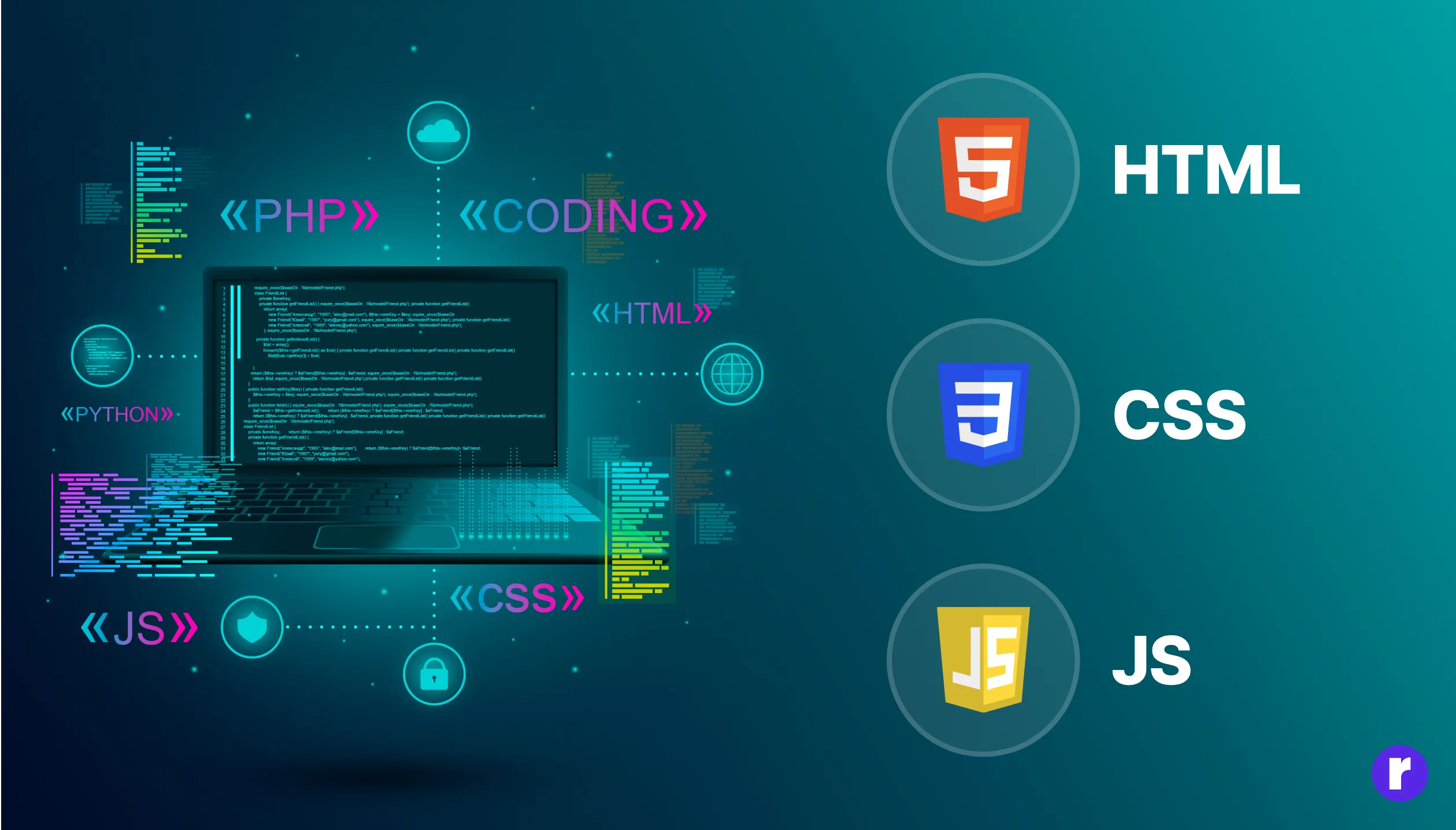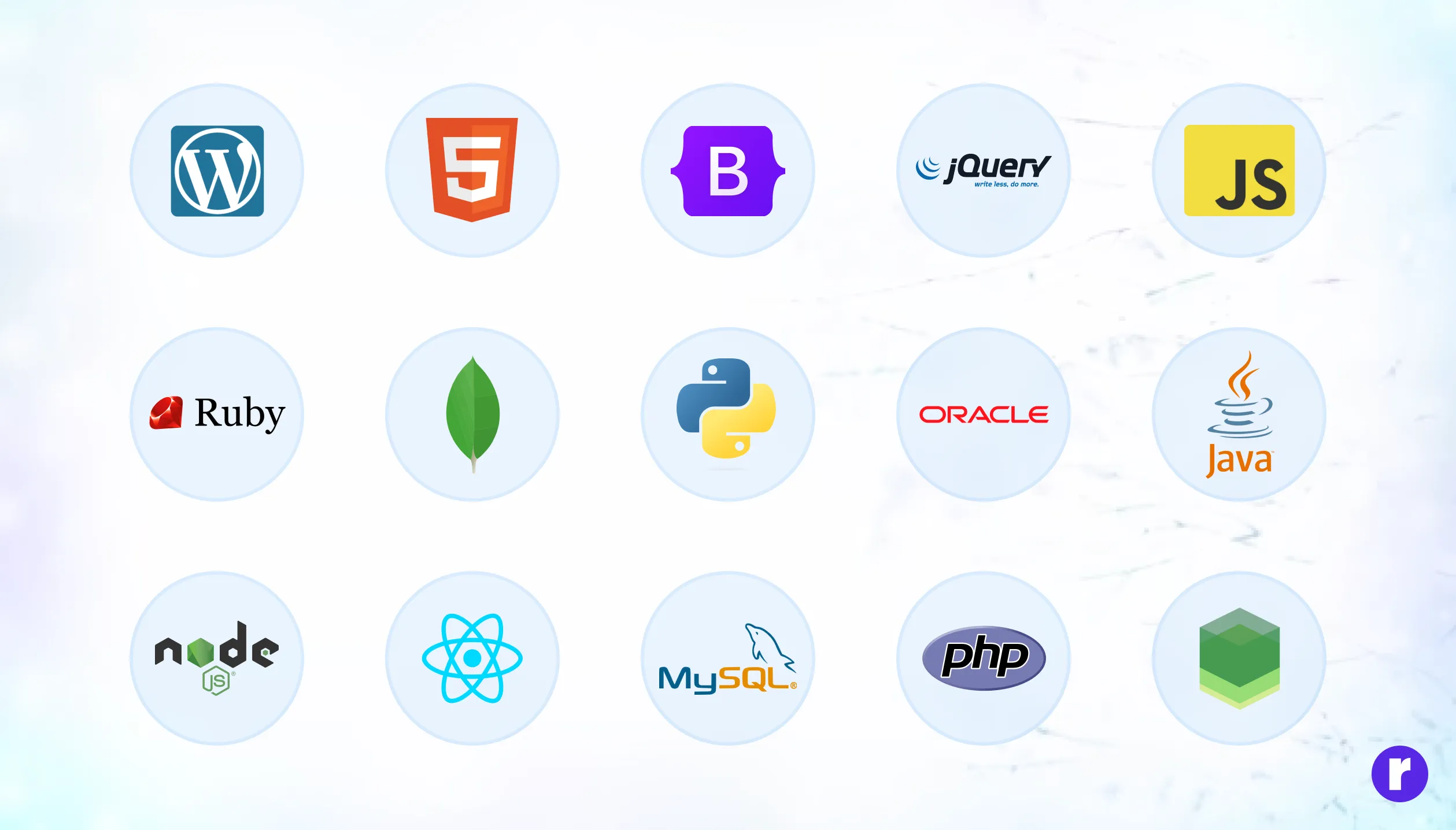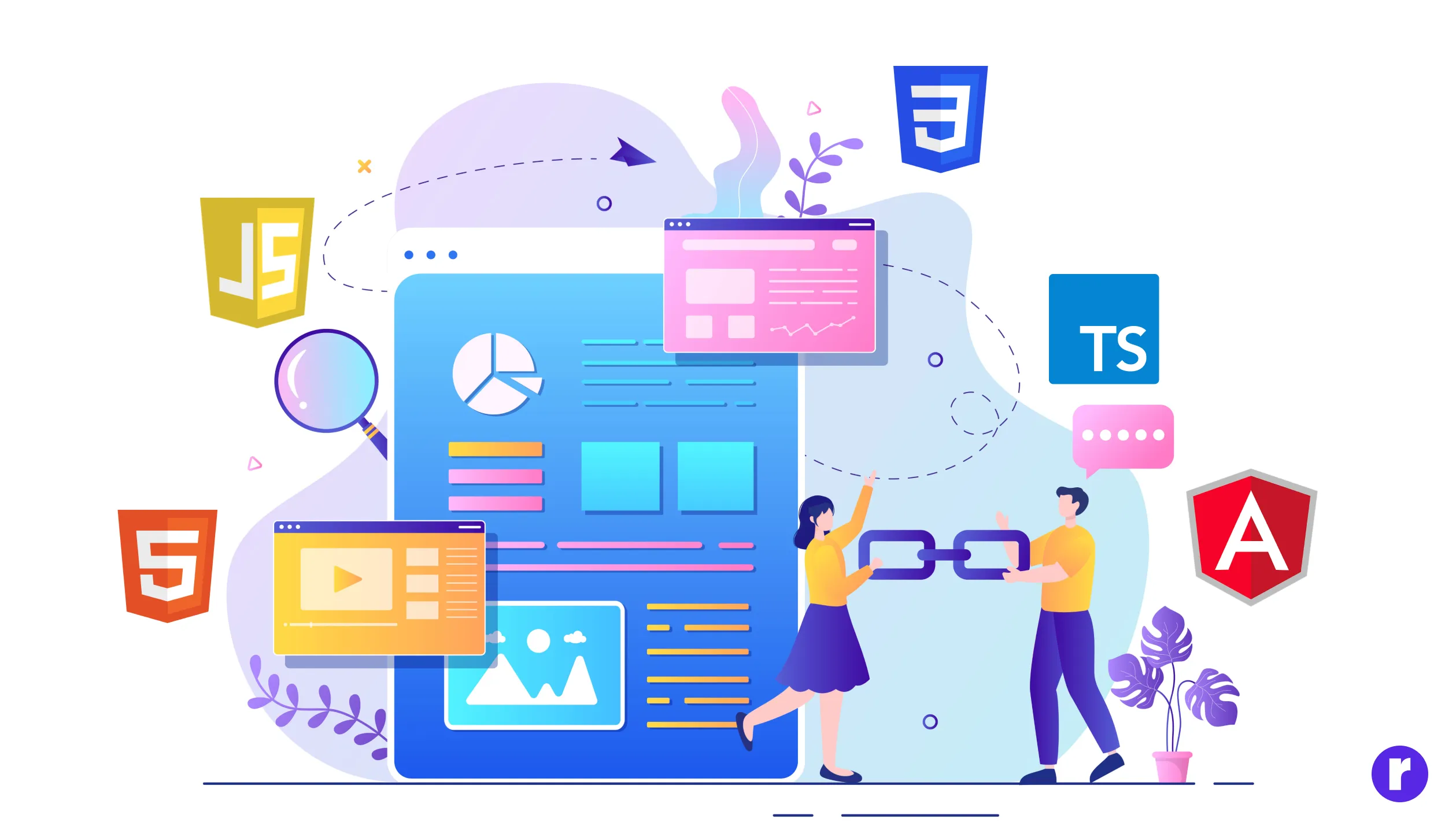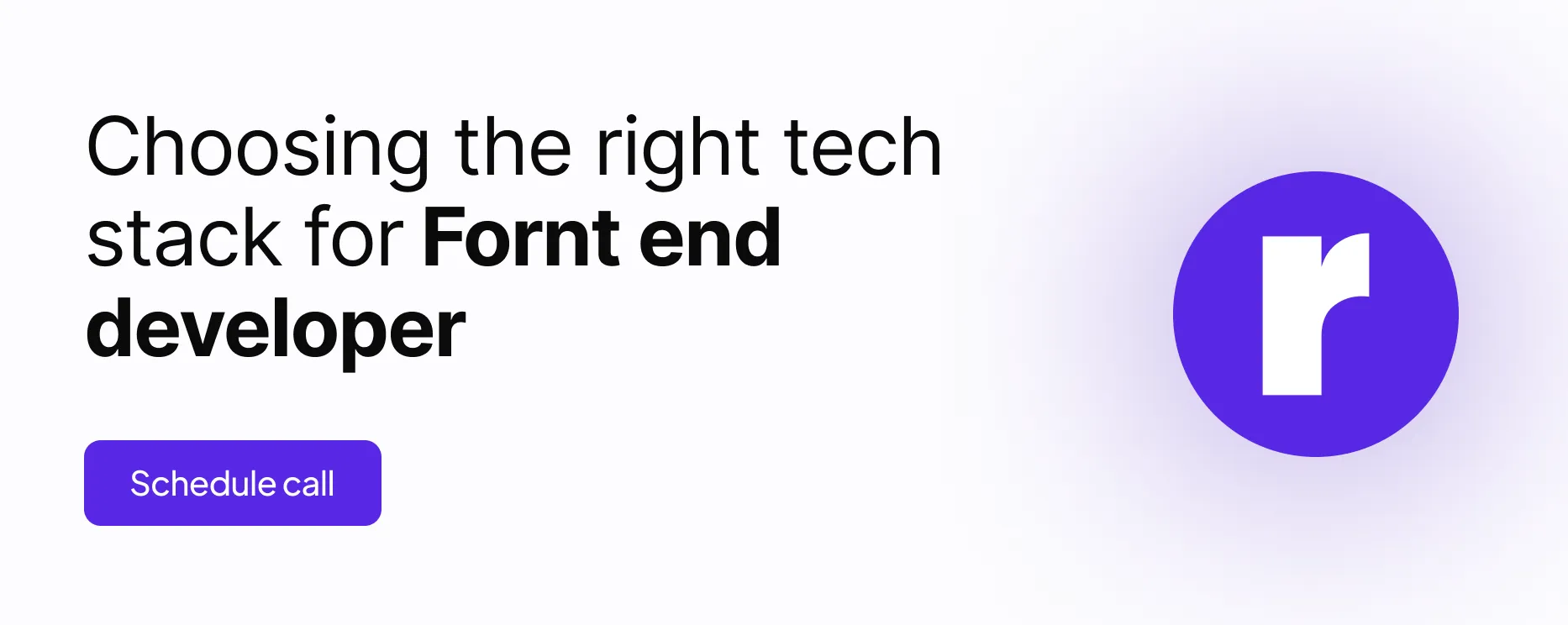Making the appropriate technology stack choice for front-end development

Written by
Palvi Tiwari
Front End Developer
Mohit Bishnoi
Front End Developer
Table of contents
Build with Radial Code
Choosing the right tech stack for front-end development is a crucial decision that can significantly impact the performance, scalability, and maintainability of your web application.
Understanding the Front-End Tech Stack

HTML, CSS, and JavaScript
- HTML for structuring content.
- CSS for styling and layout.
- JavaScript for interactivity and functionality.
Streamlining the Development Workflow: Leveraging modern web development tools such as npm, Yarn, Webpack, and Babel to enhance efficiency and productivity throughout the development process.
Key Considerations for Choosing a Tech Stack
- Project Requirements: Consider the specific needs of your project, such as performance, complexity, and target audience.
- Popular Frameworks and Libraries: Evaluate popular front-end frameworks likeReact, Angular and Vue.js, as well as libraries like jQuery and Bootstrap. Explore more.
- Performance Optimization: Elevate your website's performance by addressing key factors such as load times, rendering speed, and caching mechanisms. For further insights, delve into this article.
- Browser Compatibility Assurance:Verify that your selected stack seamlessly aligns with major web browsers.
- Mobile Responsiveness: Embrace mobile-first design principles and adopt responsive frameworks to engage a diverse audience effectively. Explore more to create responsive website.
- Optimizing for Search Engines: Deliberate on the stack's SEO implications and opt for technologies that facilitate robust SEO practices. Explore more about SEO.
- Community Engagement and Support: Having a robust community and comprehensive documentation can provide invaluable assistance when troubleshooting issues arise.
- Developer Skill Set: Evaluating the skills of your development team is crucial for selecting a tech stack that aligns with their expertise and maximizes productivity.
Interested in development services for your project? Learn more.
Common Front-End Tech Stacks

- React: A prevalent JavaScript library renowned for its versatility and efficiency in crafting dynamic user interfaces.
- Angular: A sophisticated front-end framework distinguished by its emphasis on modularity and comprehensive feature set.
- Vue.js: A progressive JavaScript framework renowned for its seamless integration capabilities into existing codebases.
- jQuery: A lightweight JavaScript library designed to simplify HTML document traversal and manipulation, as well as event handling, and AJAX interactions.
- Vanilla JavaScript: Opting to build your front end using pure JavaScript provides unparalleled control over your codebase, although it may necessitate more effort in development.
- CSS Frameworks: Bootstrap, Foundation, and Materialize represent some of the prominent CSS. Explore more about css frameworks.
Tools and Resources for Decision-Making

- Online Communities: Platforms such as Stack Overflow, GitHub, and Reddit serve as valuable resources for developers, offering insights, solutions, and collaborative support for a wide range of programming challenges and discussions.
- Website Performance Evaluation Tools: Lighthouse, PageSpeed Insights, and WebPageTest are among the leading tools for assessing website performance.
- Documentation and Tutorials: Strong documentation and tutorials make learning and working with a tech stack easier.
- Real-world examples: Share case studies of websites or applications using different front-end tech stacks to showcase their strengths and weaknesses.
Front-End Technology Stack Components

- Dynamic Web Development Tools: React, Angular, and Vue.js offer pre-built components and structured architectures, empowering the creation of interactive web applications. Choose one based on your project's complexity and your team's expertise.
- CSS Preprocessors and Postprocessors: SASS and LESS serve as invaluable tools for maintaining organized and scalable stylesheets. These tools provide features such as variables, mixins, and nesting, thereby enhancing the efficiency of CSS development.
- Package Managers and Build Tools: Tools like npm, yarn, and build tools like Webpack or Gulp streamline development, automate tasks, and optimize performance. These tools are indispensable for effectively managing dependencies and bundling assets.
- Responsive Web Design: Responsive design is a must in today's multi-device world. It ensures that your application looks and functions well on various screen sizes. Achieving this necessitates the utilization of media queries and fluid layouts.
Conclusion
Key Takeaways: Make informed decisions based on project needs, team skills, and community support for successful front-end development.
Importance: Informed choices ensure performance, scalability, and smooth development. Stay updated to adapt to evolving technologies and practices.
Encouragement: Keep learning to stay competitive in the fast-changing front-end landscape.
